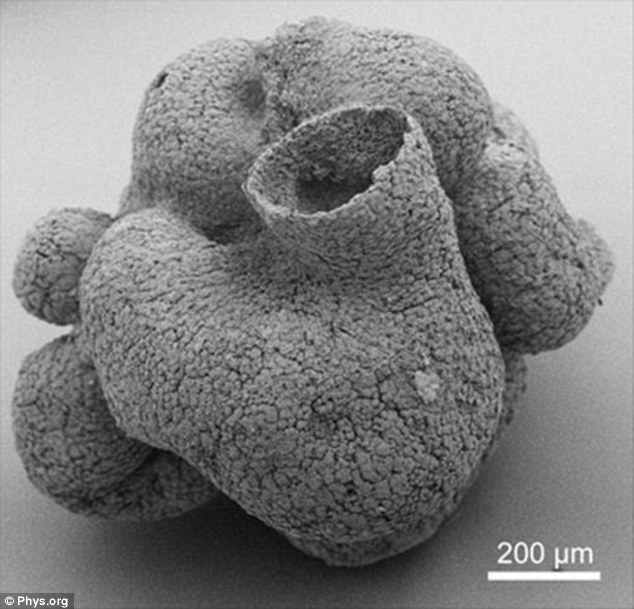|
|
| World’s oldest sponge unearthed: 'Nearly pristine' 600 million-year-old fossil pushes back the date for animal evolution |
By ELLIE ZOLFAGHARIFARDFOR March 11,2015, Dailymail 
The sponge was found in the Doushantuo Formation in southern ChinaIt suggests multi-cellular evolution took place before Cambrian explosionThe Cambrian explosion is believed to have begun 541 million years agoThe explosion refers to a time when complex creatures rapidly appeared A 'nearly pristine' 600 million-year-old sponge has been uncovered in southern China. Scientists believe the sponge – which represents the most primitive animal on Earth - is the oldest ever found. Its discovery pushes back the start of the evolution of multicellular animals to before the Cambrian explosion 541 million years ago. Researchers want to pin down the date because they believe it is key to understanding early animal evolution. The split between sponges and most other animals was a major event in the early history of life on our planet. The sponge, found in the Doushantuo Formation, is just over one millimetre in height and width, according to researchers from the Nanjing Institute of Geology and Palaeontology. To get a good look, scientists used scanning electron microscopy and X-ray technology. The team has named it Eocyathispongia qiania and say that it is made up of hundreds of thousands of cells. THE CAMBRIAN EXPLOSIONThe Cambrian Explosion, around 541 million years ago, was a wide variety of animals burst onto the evolutionary scene. Before about 580 million years ago, most organisms were simple, composed of individual cells occasionally organised into colonies. Over the following 70 or 80 million years, the rate of evolution accelerated and the diversity of life began to resemble that of today. It ended with the Cambrian-Ordovician extinction event, approximately 488 million years ago. The latest discovery pushes back the date of multicellular animal evolution to 60 million years before the Cambrian explosion started. Sponges, also known as Porifera, are multicellular organisms that have bodies covered with pores and channels that allow water to circulate through them. Scientists have still to confirm when they first appeared on Earth. Estimates range from 700 million years ago to a time known as the Cambrian period, which took place 541 million to 485 million years ago. The latest finding would place the sponge around 60 million years before the Cambrian started. A 'nearly pristine' 600 million-year-old sponge has been uncovered in southern China.Scientists believe the sponge – which represents the most primitive creature on Earth - is the oldest ever found |
|
|
|
